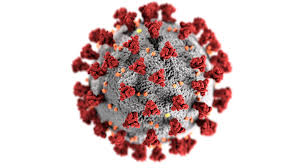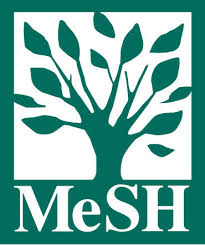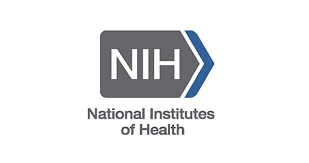Developed by Shray Alag, The Harker School
Sections: Correlations,
Clinical Trials, and HPO
Navigate: Clinical Trials and HPO
| Name (Synonyms) | Correlation | |
|---|---|---|
| drug415 | BMS-986259 Wiki | 0.45 |
| drug939 | Covid-19 swab PCR test Wiki | 0.45 |
| drug1125 | EHR-based Clinician Jumpstart Wiki | 0.45 |
| Name (Synonyms) | Correlation | |
|---|---|---|
| D016491 | Peripheral Vascular Diseases NIH | 0.32 |
| D058729 | Peripheral Arterial Disease NIH | 0.26 |
| D014652 | Vascular Diseases NIH | 0.22 |
| Name (Synonyms) | Correlation | |
|---|---|---|
| D009362 | Neoplasm Metastasis NIH | 0.22 |
| D008103 | Liver Cirrhosis, NIH | 0.22 |
| D007676 | Kidney Failure, Chronic NIH | 0.17 |
| D051436 | Renal Insufficiency, Chronic NIH | 0.16 |
| D006333 | Heart Failure NIH | 0.14 |
| D008175 | Lung Neoplasms NIH | 0.14 |
| D007674 | Kidney Diseases NIH | 0.13 |
| D029424 | Pulmonary Disease, Chronic Obstructive NIH | 0.13 |
| D017563 | Lung Diseases, Interstitial NIH | 0.13 |
| D002908 | Chronic Disease NIH | 0.12 |
| D008171 | Lung Diseases, NIH | 0.10 |
| D009369 | Neoplasms, NIH | 0.08 |
| Name (Synonyms) | Correlation | |
|---|---|---|
| HP:0000083 | Renal insufficiency HPO | 1.00 |
| HP:0001395 | Hepatic fibrosis HPO | 0.22 |
| HP:0004950 | Peripheral arterial stenosis HPO | 0.20 |
| Name (Synonyms) | Correlation | |
|---|---|---|
| HP:0012622 | Chronic kidney disease HPO | 0.18 |
| HP:0100526 | Neoplasm of the lung HPO | 0.17 |
| HP:0001635 | Congestive heart failure HPO | 0.15 |
| HP:0000077 | Abnormality of the kidney HPO | 0.15 |
| HP:0006510 | Chronic pulmonary obstruction HPO | 0.15 |
| HP:0006515 | Interstitial pneumonitis HPO | 0.13 |
| HP:0002088 | Abnormal lung morphology HPO | 0.10 |
| HP:0002664 | Neoplasm HPO | 0.09 |
Navigate: Correlations HPO
There are 5 clinical trials
The purpose of this study is to characterize the single-dose plasma and urine PK of TAK-788 and its active metabolites (AP32960 and AP32914) in participants with severe RI compared to matched-healthy participants with normal renal function.
A study to evaluate the drug effect, safety, and tolerability of BMS-986259 in participants with different levels of kidney function
The objective of this protocol is to test the effectiveness of a Jumpstart intervention on patient-centered outcomes for patients with chronic illness by ensuring that they receive care that is concordant with their goals over time, and across settings and providers. This study will examine the effect of the EHR-based intervention to improve quality of palliative care for patients over the age of 65 with chronic, life-limiting illness with a particular emphasis on Alzheimer's disease and related dementias (ADRD). The specific aims are: 1) to evaluate the effectiveness of a novel EHR-based (electronic health record) clinician Jumpstart guide, compared with usual care, for improving the quality of care; the primary outcome is documentation of a goals-of-care discussion during the hospitalization. Secondary outcomes focus on intensity of care: ICU use, ICU and hospital length of stay, costs of care during the hospitalization, and 30-day hospital readmissions; and 2) to conduct a mixed-methods evaluation of the implementation of the Jumpstart intervention, guided by the RE-AIM and CFIR frameworks for implementation science, incorporating quantitative assessments of effectiveness, implementation and maintenance and qualitative assessments of clinician perspectives on barriers and facilitators to future implementation and dissemination.
Description: The primary outcome is the proportion of patients who have a goals-of-care (GOC) discussion that has been documented in the EHR in the period between randomization and 30 days following randomization The proportion is the number of patients with GOC documentation over the number of patients in each study arm. Documentation of goals-of-care discussions will be evaluated using our NLP/ML methods. Study staff will manually review and compare findings using a randomly-selected sample of charts using our standard EHR abstraction methods; manual chart abstraction will be the gold standard.
Measure: EHR documentation of Goals of Care discussions Time: Assessed for the period between randomization and 30 days following randomizationDescription: Secondary outcomes include measures of intensity of care, including utilization metrics: Number of ICU admissions during the patient's (index) hospital stay will be collected from the EHR using our automated and validated methods.
Measure: Intensity of care/ICU use: ICU admissions Time: Assessed for the period between randomization and 30 days following randomizationDescription: Secondary outcomes include measures of intensity of care, including utilization metrics: Number of days the patient spent in the ICU during their (index) hospital stay will be collected from the EHR using our automated and validated methods.
Measure: Intensity of care/ICU use: ICU length of stay Time: Assessed for the period between randomization and 30 days following randomizationDescription: Secondary outcomes include measures of intensity of care, including utilization metrics: Number of days the patient spent in the hospital during that (index) hospital stay will be collected from the EHR using our automated and validated methods.
Measure: Intensity of care/Hospital use: Hospital length of stay Time: Assessed for the period between randomization and 30 days following randomizationDescription: Secondary outcomes include measures of intensity of care, including utilization metrics: Number of hospital readmissions between randomization and 30 days following randomization will be collected from the EHR using our automated and validated methods.
Measure: Intensity of care: Hospital Readmissions 30 days Time: Assessed for the period between randomization and 30 days following randomizationDescription: Secondary outcomes include measures of intensity of care, including utilization metrics: Number of ICU readmissions between randomization and 30 days following randomization will be collected from the EHR using our automated and validated methods.
Measure: Intensity of care: ICU Readmissions 30 days Time: Assessed for the period between randomization and 30 days following randomizationDescription: Costs for intervention vs. control will be reported in US dollars and identified from UW Medicine administrative financial databases. Costs will be reported for total hospital costs and disaggregated costs (direct-variable, direct fixed, indirect costs). Direct-variable costs will include supply and drug costs. Direct-fixed costs will include labor, clinical department administration, and overhead fees. Indirect costs represent services provided by cost centers not directly linked to patient care such as information technology and environmental services. Costs for ED (emergency department) days and ICU days will be similarly assessed.
Measure: Intensity of care: Healthcare costs Time: 1 and 3 months after randomizationDescription: From Washington State death certificates.
Measure: All-cause mortality at 1 year (safety outcome) Time: 1 year after randomizationDescription: Qualitative interviews after individual participation. Interviews will be guided by the RE-AIM and Consolidated Framework for Implementation Research (CFIR) to explore the factors associated with implementation (e.g., reach, maintenance, feasibility, inner and outer settings, individuals, and processes of care.) Individual constructs within these domains were chosen to fit this specific intervention and context.
Measure: Key Implementation Factors Time: 3 months after randomizationDetermination of IgM and IgG antibodies against SARS-CoV-2 in dialysis patients by continous monitoring in the period from March 2020 to december 2020
Description: IgM and IgG against SARS-CoV-2
Measure: AAntibody response Time: 1 yearThe coronavirus (COVID-19) pandemic has created a significant strain on health care resources across the world for managing critically ill patients. Emerging reports from China, South Korea and Italy have reported varying incidence of acute kidney (AKI) ranging from 5-15% with a mortality of 60-80% however there is no systematic assessment of the risk factors, recognition, course and outcomes in patients with and without kidney disease whose course is complicated by AKI1-4. Patients with underlying CKD, immunosuppressed patients with renal transplants and ESKD patients are at high risk for COVID-19 infection and there is limited information on the effect of COVID-19 on the course and outcomes of these patients. The requirement for renal support including IHD, CRRT and sorbent based therapies has been variable and has contributed to the intense pressure on the nephrology and critical care providers for delivering these therapies. As the COVID-19 pandemic expands in the USA and abroad, there is an intense need to understand the epidemiology of the disease and the resources needed for renal support to inform clinical management and public health interventions. In this study, the investigators aim to investigate health care facilities across the world (hospital wards, ICU, outpatient clinics, nursing homes, healthcare centers) to draw a global picture of incidence, risk factors, resources available for treatment and prognosis of acute and chronic kidney disease in patient with COVID 19 confirmed infection. The aim is to identify trends in patients with acute and chronic kidney disease, determine its incidence, treatment and outcomes in different settings across the world. This information will be used to develop and implement educational tools and resources to prevent deaths from AKI and progression of CKD in this and following pandemics.
Description: Meeting of at least one of the modified KDIGO Criteria Increase or decrease in serum creatinine >0.3 mg/dl from reference in 48 hours Increase or decrease in serum creatinine > 50% from reference in 7 days Urine output < 400 ml/day
Measure: AKI incidence Time: from hospital admission through hospital discharge upto 24 weeksDescription: initiation of intermittent hemodialysis, continuous hemodialysis or peritoneal dialysis during the hospital stay
Measure: Dialysis requirement Time: through study completion upto 1 year from enrollmentDescription: Deaths during primary hospitalization
Measure: hospital mortality Time: through study completion within 1 yearDescription: C-Complete: SCr < 0.3 mg/dL from reference P-Partial: Requires no dialysis but not complete recovery N-No recovery: Dialysis dependent C-Complete: SCr < 0.3 mg/dL from reference P-Partial: Requires no dialysis but not complete recovery N-No recovery: Dialysis dependent Percentage of patinets with renal functioanl recovery based on serum creatinien levels classfied as C-Complete: SCr < 0.3 mg/dL from reference P-Partial: Requires no dialysis but not complete recovery N-No recovery: Dialysis dependent
Measure: Renal functional recovery Time: Assessed at at 3, 6 and 12 months from enrollment at hospital admissionDescription: EQL5D scale and SH8 scales completed at 3, 6 and 12 months post enrollment
Measure: Functional status Time: questionnaires to be completed at 3, 6 and 12 months from enrollment at hospital admissionDescription: Number of days patient is in the hospital and ICU and is managed with ventilators, dialysis or other extracorporeal organ support e.g. ECMO during the hospital stay
Measure: Resource utilization Time: Within 1 year of enrollment for primary hospitalizationAlphabetical listing of all HPO terms. Navigate: Correlations Clinical Trials





Data processed on September 26, 2020.
An HTML report was created for each of the unique drugs, MeSH, and HPO terms associated with COVID-19 clinical trials. Each report contains a list of either the drug, the MeSH terms, or the HPO terms. All of the terms in a category are displayed on the left-hand side of the report to enable easy navigation, and the reports contain a list of correlated drugs, MeSH, and HPO terms. Further, all reports contain the details of the clinical trials in which the term is referenced. Every clinical trial report shows the mapped HPO and MeSH terms, which are also hyperlinked. Related HPO terms, with their associated genes, protein mutations, and SNPs are also referenced in the report.
Drug Reports MeSH Reports HPO Reports